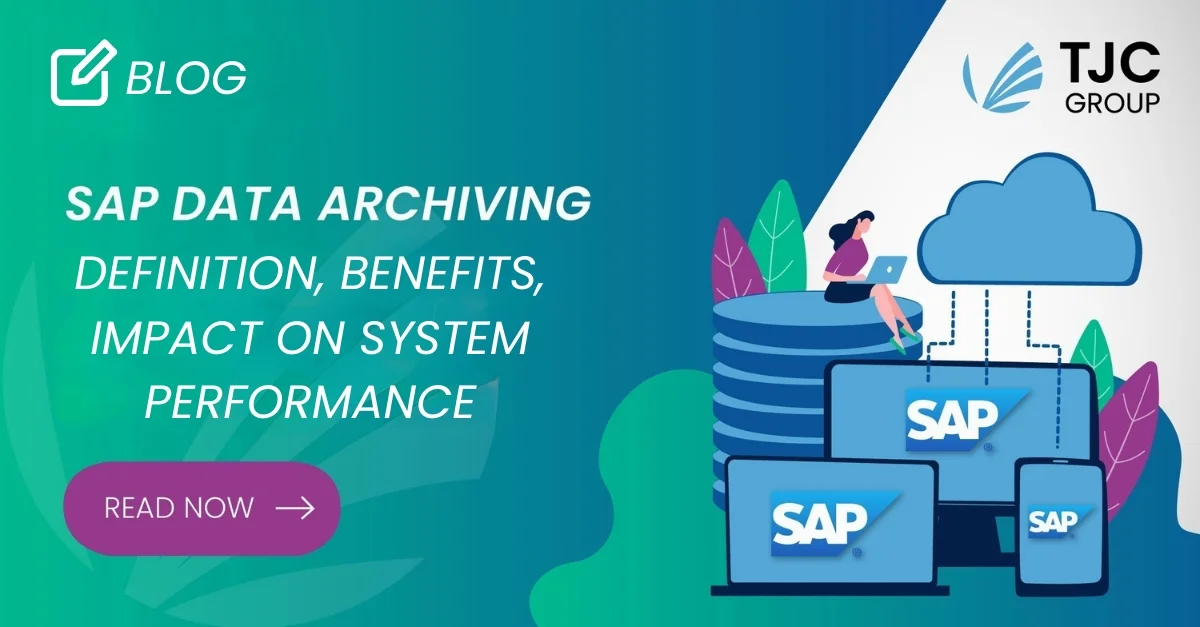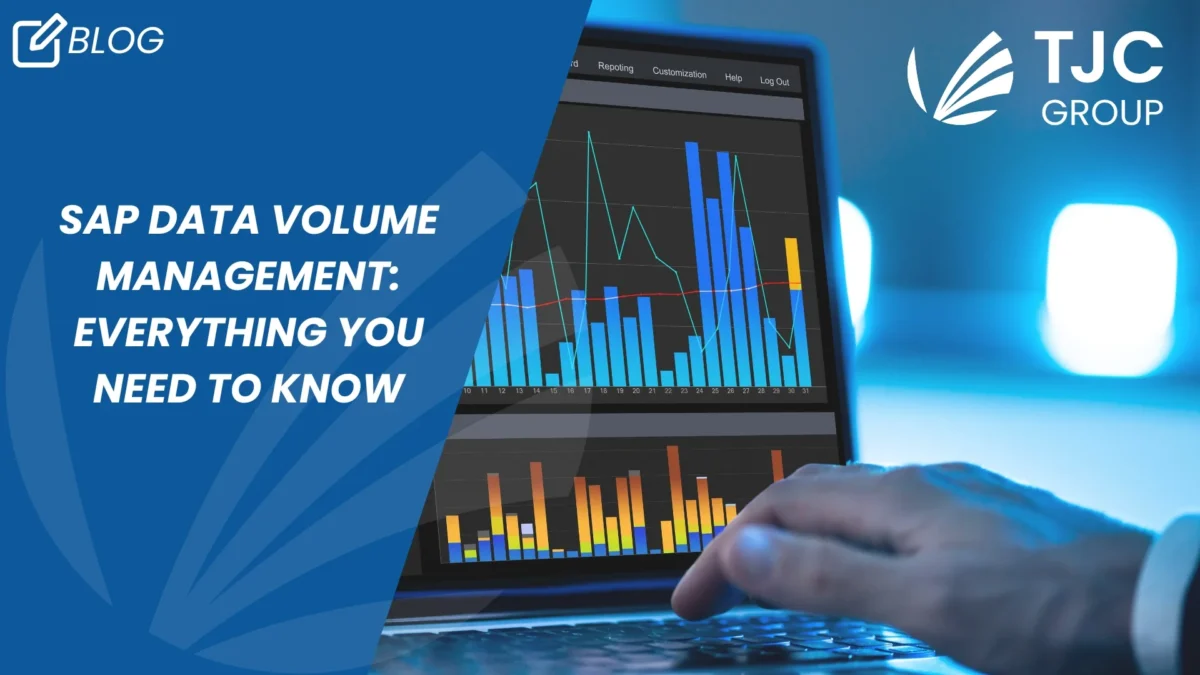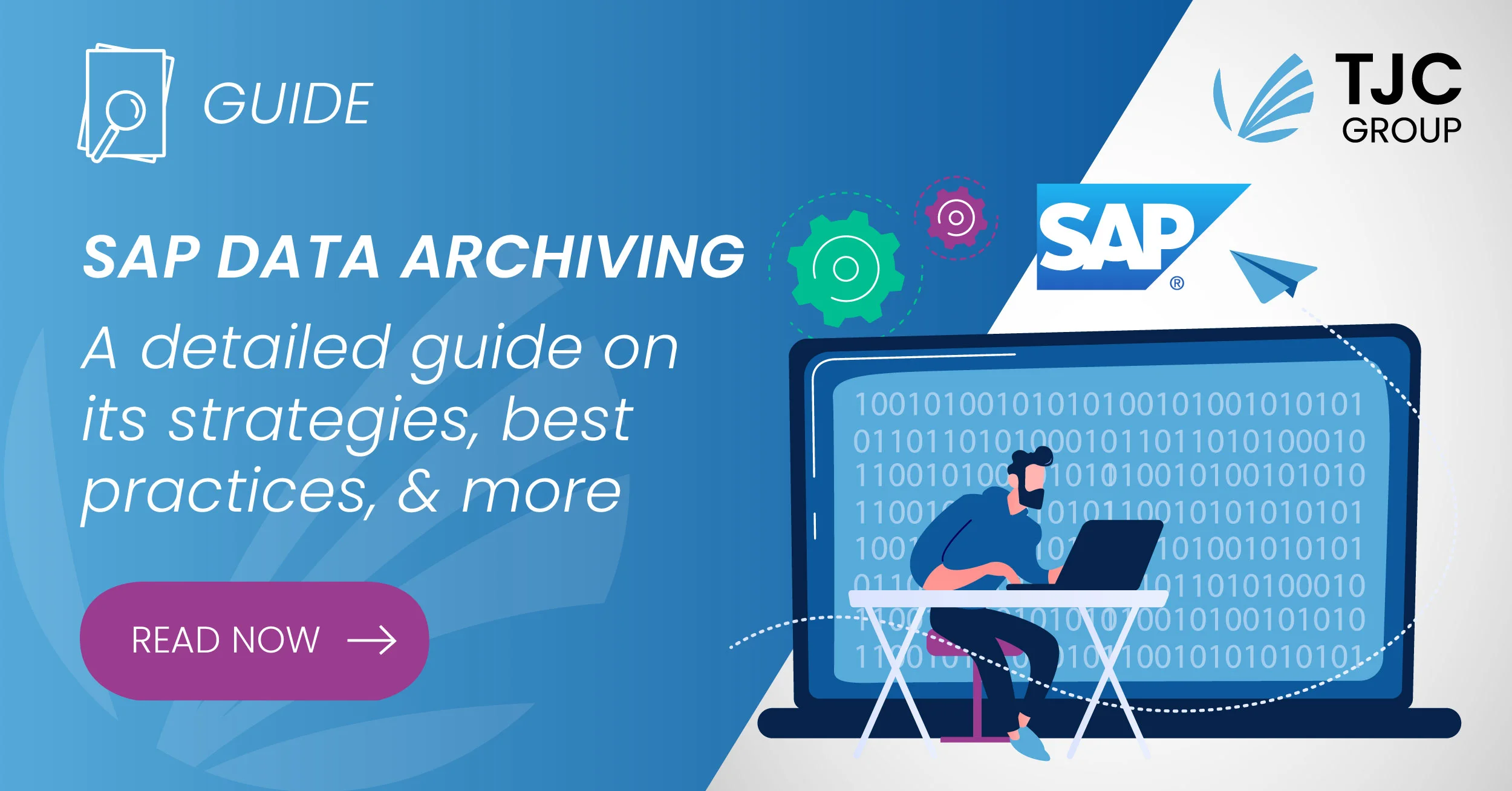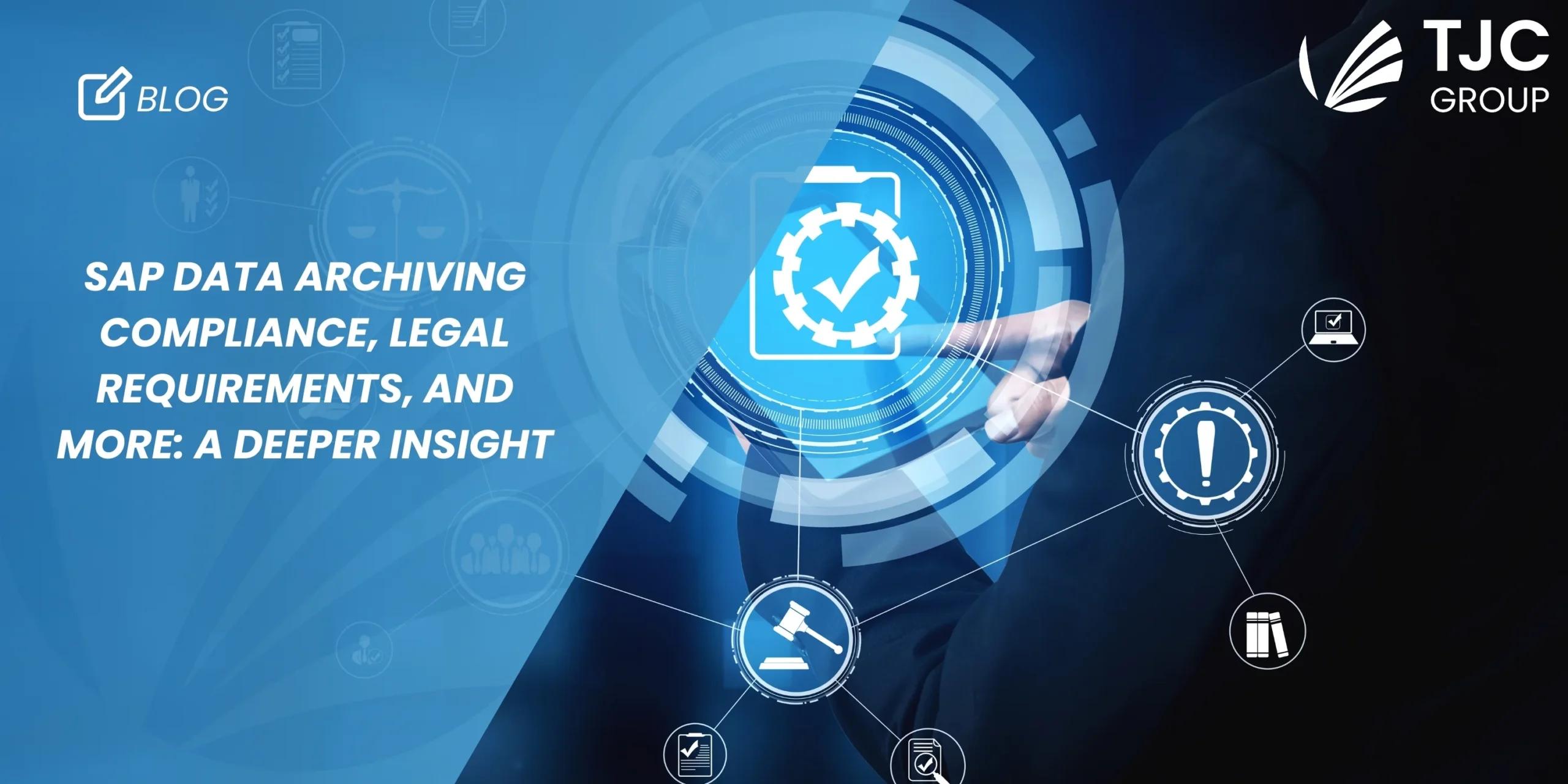Author: Priyasha Purkayastha, Global Content Manager, TJC Group
As data continues to grow at an exponential rate, the costs of storing them are spiralling out of control. While data helps create the base for business-essential decisions, managing them is critically important; if left unmanaged, not only will the storage cost be high, but it would also affect SAP system performance, data privacy, and more. One of the best ways to rein over your SAP data volume management is by archiving data. But do you know what the nuances required in data management are? What are its benefits, and how does it contribute to the global green initiative? Read our blog to learn all about it!
Table of contents
- A quick introduction to data management in SAP systems
- Why is SAP data volume management important?
- Key aspects of SAP data volume management
- Managing your SAP data growth for S/4HANA migration
- SAP data volume management for HANA database
- Understanding how to use data effectively
- Apply SAP data archiving for data management
- TJC Group at your disposal for SAP data growth management
A quick introduction to data management in SAP systems
Data management refers to collecting, organising, securing, and storing data, which are analysed to make important business decisions. With constant and rapid data growth, SAP systems must be managed holistically, with the spotlight being on optimised performance, reduced database cost, and sustainability. Some might argue why such humungous amounts of data are needed, but lo and behold, it is quintessential to how a business operates efficiently. While being at the centre of any business, if data is left on its own, it can become impractical and inactive. Organisations must have strategies and data management solutions in place that will help benefit from all types of data for operational use across supply chains, employee networks, partner and customer ecosystems, and so on.
Why is SAP data volume management important?
Apart from the fact that data management helps in storage optimisation in SAP systems, there are several other reasons to opt for it. For starters, the amount of data created, captured, copied, and consumed across the world hit approximately 65 zettabytes in 2020; the global data creation is estimated to grow by more than 180 zettabytes in 2025. Understand that data is created every minute, every day, every month, and every year. The count is innumerable. A slightly positive aspect is that the storage capacity is estimated to increase at a compound annual growth rate (CAGR) of 19.2% in 2025; however, with this increase comes the storage optimisation of SAP systems. For this, meticulous data management is a top priority.
Key aspects of SAP data volume management
There are several things surrounding data management that help optimise data growth in SAP; we have listed some of them below:
Data governance
Simply put, data governance is the collection of rules and responsibilities that help ensure data availability, quality, compliance, and security across organisations. With the help of data governance, organisations can establish infrastructure while naming the individuals or positions within the organisation. In fact, this helps define both authority and responsibility in handling and protecting specific kinds of data. Furthermore, bear in mind that data governance is a key part of compliance for systems to ensure the security of the data – both when it is being used and retrieved from the system.
Data security
Another key aspect of SAP data volume management is data security. Today, hackers, viruses, cyberattacks, and data breaches have become an even more significant concern, especially with the emerging cyber threats that are coming up. Data security comes as a part of data governance that ensures the accurate setup of systems while ensuring proper and timely administration to protect the data. Additionally, data security ensures that there are procedures in place for protecting data that are outside the system and database.
Data integration
Data integrations help in ingesting, transferring, combining, and provisioning data when needed. This process occurs within the enterprise as well as across partners, third-party data sources, use cases, and so on. A comprehensive approach helps in meeting the data consumption requirements of all the applications and business processes. Furthermore, data integration has several techniques for SAP data volume management, such as bulk/batch movement, change data capture, extract, load, transform (ETL), data virtualisation, data replication, and data orchestration.
Master data management (MDM)
For SAP storage optimisation, master data management or MDM is quite imperative. Basically, master data management is the process of creating a single trusted master reference that is crucial for business data like customer data, asset data, finance data, and so on. MDM, moreover, enables businesses to ensure multiple and inconsistent versions of data in processes, operations, analytics, and reporting are not in use.
Managing your SAP data growth for S/4HANA migration
In 2022, the UK and Ireland SAP User Group (UKISUG) conducted a survey that showed 61% of the organisations were experiencing data management challenges, hindering the automation of their business processes during migration to S/4HANA. But have you given a thought to what the primary obstacle here can be? All in all, during migration, the lack of readiness in data management is a major challenge.
If data isn’t appropriately managed during SAP storage optimisation, it can directly impact the performance of the system. Consequently, this could lead to an increase in the total cost of ownership (TCO). For the management of data in SAP systems, there are several strategies in place, with data archiving being one of the most preferred choices. SAP data archiving is an effective strategy for managing the ever-growing database that helps increase security, improve compliance and control costs. An interesting aspect that you must know is that the archived data, although saved outside of the SAP database, remains available for display through the usual transactions.
SAP data volume management for HANA database
With the pace at which data is growing, the volume is expected to double within several years. Effectively sizing your HANA database is a crucial aspect of SAP S/4HANA migration. Essentially, managing your database contributes to a smoother operation and avoids potential drawbacks. What’s even more important to know is that a classic database will become slow if and when SAP data growth goes out of control, and when that happens, the HANA database will simply stop working.
A simple and streamlined approach to calculating memory requirements typically involves estimating data volume. Additionally, it takes future data growth into account and doubles the result; for example, 2TB of memory for 1TB of data. If organisations run out of HANA memory, it can lead to complex upgrades like license updates, which is not an easy task. There are also increasing licensing costs associated with it. Therefore, SAP data volume management for the HANA database becomes excessively important. Find out the different ways you can control database growth, strategies to optimise SAP landscape costs, and more in this blog: https://www.tjc-group.com/blogs/hana-database-how-to-keep-data-growth-under-control-sap-data-management/
Understanding how to use data effectively
To understand why SAP storage optimisation is essential, understanding how to handle data effectively is quintessential. The overall gist is that data helps drive better and informed decision-making. But can organisations directly access the accurate data without having to scan through all the irrelevant ones? Maybe yes, but wouldn’t it be much easier if these important pieces of information were conveniently accessible?
As organisations, you must understand that legacy or inactive data in your SAP systems not only affects the performance but also leads to security and compliance risks. For SAP data volume management, there are mainly four areas that organisations must focus on, namely –
- Using automation for data archiving
- Generating standard outputs for audit and tax purposes
- Compliance with data privacy requirements
- Managing data that needs to be migrated.
Apply SAP data archiving for data management
If your SAP data growth is spiralling, applying data archiving is deemed a logical and practical solution. Data archiving helps de-clutter the live database, which makes it easier for admins to maintain the DB. Having said that, archiving assists in carrying out backups and other routine maintenance tasks. Here are some of the benefits of applying data archiving for managing data growth –
Enhanced performance of the system
Removing inactive data from the live database will optimise the overall performance of the SAP system. Organisations can seamlessly leverage faster response times for transactions, reports, and queries. Additionally, it helps enhance user productivity and satisfaction.
Keeps storage costs in control
Because the inactive data is stored outside the live database, the storage cost automatically reduces. How? Well, along with storage optimisation in SAP systems, the size of the database was reduced, resulting in an overall reduction in costs. This particularly comes in handy for those organisations that operate with expensive storage solutions.

Helps stay compliant with data retention policies
One of the major benefits of applying data archiving for SAP data volume management is compliance with data retention policies. Archiving helps organisations implement and enforce retention policies in a much more streamlined manner. In fact, by defining retention periods in archiving, organisations can also ensure regulatory, legal, and business compliance.
TJC Group at your disposal for SAP data growth management
If you ask whether data management is a boon, the answer is an obvious yes. Having an optimised database will help in the flexibility and scalability of the business. It helps contribute to business agility while allowing you to become more responsive to customer needs.
TJC Group comes with 25+ years of expertise in helping organisations with their data management challenges. Our software, Archiving Sessions Cockpit (ASC), for archiving, automates the entire process, eliminating any need for manual efforts and errors. Our proven approach based on SAP Activate Methodology helps not only with a seamless workflow but also in delivering promised results. Want to get your SAP database lean, efficient, and cost-effective? Contact us now!












